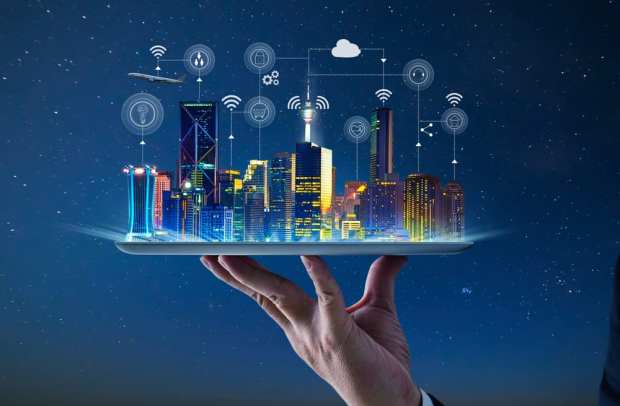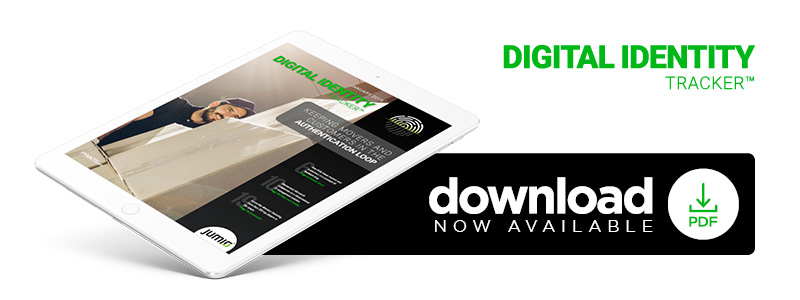Deep Dive: Why Smart Cities Should Get Smart About Digital ID

By some accounts, approximately 70 percent of the world’s population will reside in smart cities by 2050. The following Deep Dive explores how digital IDs will be key to unlocking the full potential of smart cities, from collecting transportation fares to improving emergency services response times.
The rapid rise of smart cities promises to connect citizens with a wide range of municipal services. By some accounts, approximately 70 percent of the world’s population will reside in smart cities by 2050. Citizens in this type of environment will find a host of connected devices designed to enhance their daily routines, such as smart parking meters that help drivers find and pay for parking. Smart trash receptacles are already being used to alert sanitation crews where trash collection services are needed, allowing them to adjust their routes and operate in a cost-effective manner.
The growth of smart cities means citizens will be able to quickly connect with a host of services, including health, public transportation and public works. For citizens to engage with these services and trust them, seamless and secure digital identity tools will be essential. The following Deep Dive explores how digital IDs will be key to unlocking the full potential of smart cities.
On-Demand And Unattended Health Services
Healthcare is a highly contentious issue that often politicizes government and personal responsibility, and debates over the government’s role in healthcare are likely to continue for years. In a smart city environment, however, healthcare access could change dramatically. Instead of in-person appointments with medical professionals, smart cities could offer citizens access to certain healthcare services from unattended kiosks that could manage tasks like analyzing saliva, drawing blood or filling prescriptions. Medical kiosks could also import the data gathered by connected devices for deeper analysis, providing consumers with more accurate insights into their individual health needs.
Though kiosk-based medical care might seem impossible, the current usage of health-related connected devices indicates that this technology could someday become a reality. Many consumers already use connected devices that track exercise activity, sleeping habits or blood pressure, indicating that they are already collecting health data without much additional effort. In a smart city, this data could provide more personalized details and address needs on demand without requiring people to take time out of their days to visit a medical office.
Before public health kiosks can become a reality, the public must first learn to trust them. Digital identity solutions must be able to collect users’ information without making the process overly complex. At the same time, they must also anonymize any data collected to keep users’ personal information and health private.
The potential benefits of such kiosks are twofold. They could provide consumers with easier access to medical care and help them regain time that would otherwise be spent at a medical office. For city officials, the data collected from the kiosks could provide insight into public health needs.
Though the technology may be a long way away, it will first require a secure and seamless digital identity solution before smart city citizens or officials are willing to trust it.
Smarter Emergency Services
Traditional emergency services are also likely to change dramatically in smart cities. Emergency medical services, including EMTs and ambulances, will be among the public services directly affected by greater connectivity. In the event of an emergency call, connected infrastructure could, for instance, change traffic lights to ensure ambulances have a clear path to a hospital.
Digital IDs could also provide EMTs with patients’ medical histories, allowing them to receive the most effective treatment. This could be especially important if they are unconscious or otherwise unable to communicate. Digital identity offerings could see use by smart city officials during emergencies. In the event of a hurricane, tsunami or wildfire, for example, the city would need its early warning system to automatically communicate information to emergency services and send out pre-approved responses to any potential dangers. This could rapidly improve the speed at which public safety officials respond to calls to close airports or major roadways.
A faster and more seamless identity verification method could help smart city officials develop a smarter way to respond to major events. These same authentication solutions could also prove to be essential tools for keeping people safe during times of disaster.
Getting Smart Trains To Run On Time
The effectiveness of a city’s public transportation will be key in determining if it is, indeed, a smart city. Urban centers could use connected technology to track the speed and efficiency of buses, trains and subways, as well as public and private vehicles. This could help transportation officials better understand patterns of congestion and transportation usage.
Public transport will move toward automated fare collection, most likely via portable devices. If administrators can determine how many people are using these public services, they’ll be able to adjust their transportation plans accordingly, leading to reduced congestion. Recent research has found that even small public transportation improvements (from 5 percent to 10 percent off peak travel times), could save major cities approximately $150 million per year.
Using connected devices and digital identity solutions, a smart city’s public transportation system could automatically determine who is using public transportation and how much each traveler should pay. This insight could help municipalities recover the approximately 15 percent of revenue that is spent on maintenance.
Paving Smart City Pathways With Digital IDs
As the millennial population grows, the implementation of smart city technology will accelerate. This tech-savvy generation has already proven to be highly disruptive in workplaces and other institutions and has demonstrated a willingness to embrace new technological innovations.
In other words, millennials are likely to lead the adoption of digital identity tools and expect government services to deliver services digitally, as well. There are already signs that certain government identification forms, such as driver’s licenses, are going to go digital. Idaho, Colorado, Maryland and Washington, D.C., launched a test in 2016 to secure digital driver’s licenses, and Wyoming joined the program the following year.
Several other nations are also experimenting with national ID systems. A decade ago, India launched Aadhaar, which aims to digitize local residents’ identities to help them access government services and encourage the nation’s demonetization effort. On top of that, China now requires citizens to apply for a digital ID at age 16, granting them access to various services, including driver’s licenses and bank accounts. Additionally, the country is experimenting with the digitization of these tools in the Guangzhou region.
For smart cities to become a reality, they will need smart digital identity tools to connect citizens with their services. Based on recent digital ID developments, the dawn of smart cities might be closer than it appears.
About The Tracker
The Digital Identity Tracker™, produced in collaboration with Jumio, is a forum for framing and addressing key issues and trends that face the entities charged with efficiently and securely identifying, and granting permission, to individuals so as to access, purchase, transact or otherwise confirm their identities.

